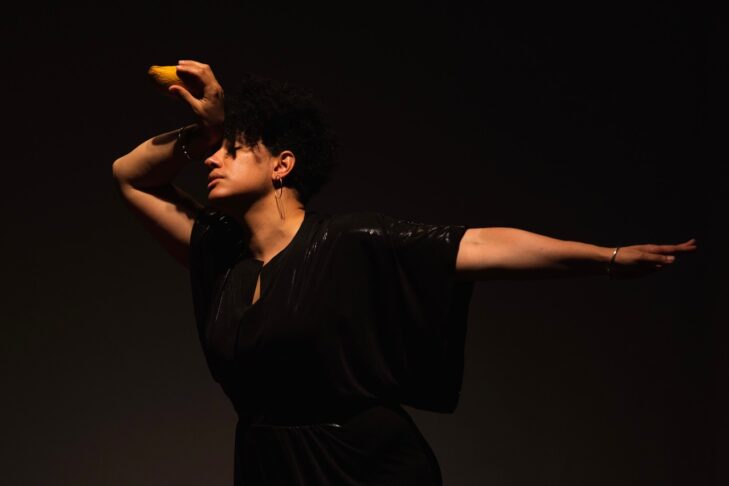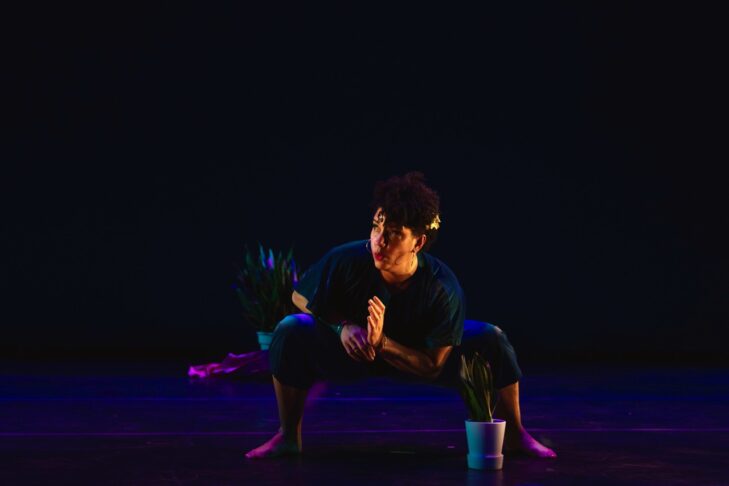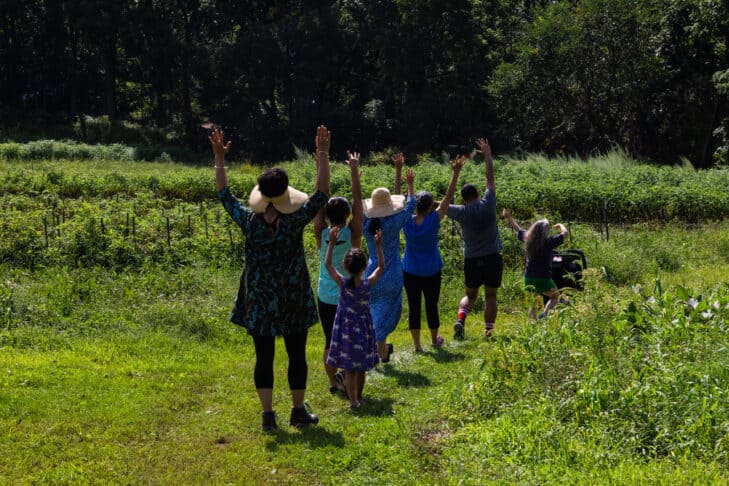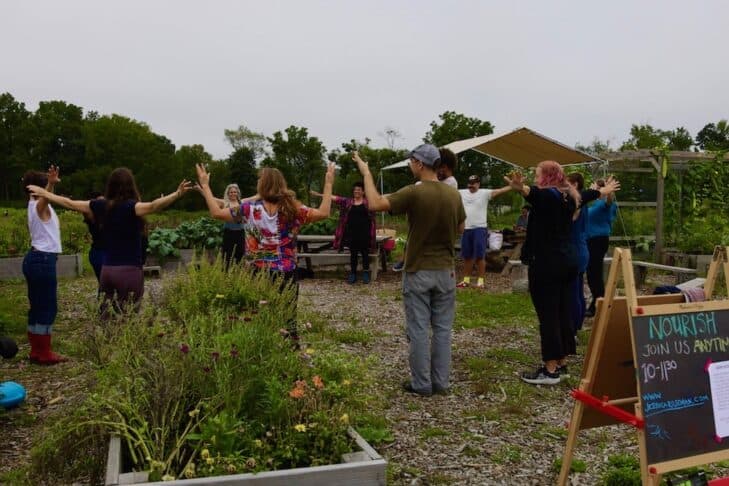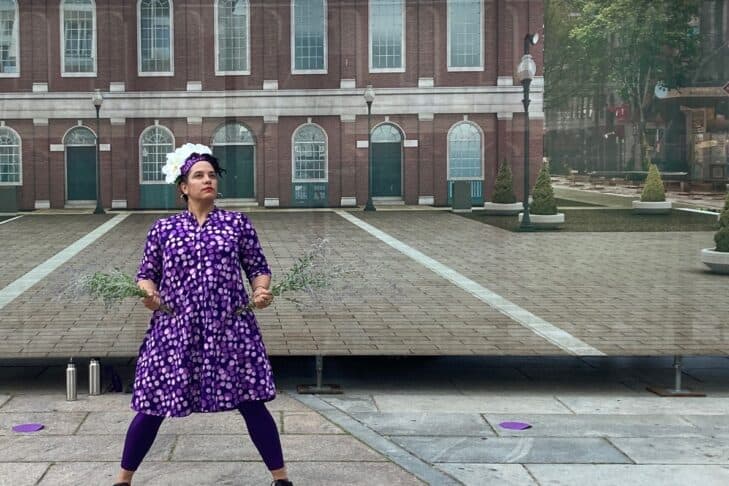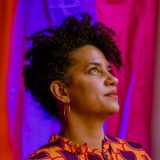When I was young, Evelyn Wasserman, my white, Ashkenazi grandmother, taught me how to make her delicious apple strudel. Her skilled hands guided mine, rolling the dough gently to envelope the filling. My brother, Josh, and I would often beg her to bake that apple strudel (and also her pies), not just for Rosh Hashanah. We delighted in Grandma’s flaky, tender pastry with just the right balance of apples, nuts, cinnamon, and sugar. Her baking for us, just like her attentive care, embodied love and acceptance. I didn’t know yet that others do not accept our brown, Jamaican, and Jewish bodies.
To choreograph this cherished memory into a dance, first I re-imagine the sensations I experienced. I recall Grandma’s warm, patient expertise. I revisit how my eager, determined fingers heightened their attention to the dough. To physicalize these memories, I reach my torso and arms forward and I smile. My thumbs and fingertips gently graze each other. I imagine cozy softness on my skin, and selectively build actions from there. I trust that whatever movement emerges is right, without judging how it may appear. Choreographing a memory into a “finished and ready for the paying public” dance takes months of rehearsal.

Following the stillbirth of my first child in 2006 and the subsequent births of my now pre-teen twins in 2010, my pre-pandemic choreography grew from preoccupations with trauma, grief, and my body’s history. I dreaded public judgment and retraumatization; I still mistrusted my body. When the pandemic hit, I faced new questions: What do I need to survive? How can I guide my children through our nation’s ongoing racial unrest? Fear held my breath and tongue. Tension disconnected me from feeling my weight supported by the ground. Could I dance in my imagination instead of in my overwhelmed body?
In response to this last question, I created Nourish, a set of questions that lead people from personal memory to movements that feel good. I describe it as a soul care toolkit that helps me, and hopefully others, to cope. In Nourish, I ask participants to resource memories that do for them what my memories of my grandmother do for me. In resourcing positive, personal memories and connecting them to our bodies and minds in the present, Nourish as a practice can help to liberate us from feelings of helplessness, inadequacy, and fear.
No longer simply seeking acceptance, in Nourish I claim the authority to choreograph dances and teach in a manner that suits my perimenopausal, biracial, Black, non-practicing Jewish, single mother-of-twins body. With Nourish, I aim to de-stigmatize dance as an elusive art form. Instead, I propose dance as an accessible prescription towards collective wellbeing. In the face of discrimination and trauma, dance can be a source of empowerment.
To combat isolation, including my own, in 2021 I took Nourish into local communities. I proposed a partnership with my local organic Community Shared Agriculture (CSA), Lexington Community Farm (LexFarm), where as their first artist in residence I could teach Nourish to farm visitors. The Cambridge Department of Human Service programs not only accepted my proposal to lead an eight-week Nourish course with Black mothers, but provided technical and administrative support. When I asked mothers to “think of a time when you used your voice with conviction,” they responded with stories of opening their throats to speak truths from their guts. We bonded while creating movement from these and other poignant confessions.
Embracing Nourish as my choreographic process in the dance studio, my creativity flowed. This past year, I made three new solo dances, “Paradise Is Now,” “Surrender,” and “Nourish: A Public Dance to Feed Our Senses.” I performed them, respectively, at the ICA Boston, the Somerville Armory, and Faneuil Hall. Multimedia artist Olivia Moon photographed and videotaped my rehearsals, performances and public Nourish engagements throughout. We produced a reflective film essay from our yearlong work, (preview here). Nourish film was funded in part by Combined Jewish Philanthropies’ (CJP) Arts & Culture Community Impact Grant Fund. I appreciate the opportunity to write about my Jewish values in Nourish, with CJP’s support.
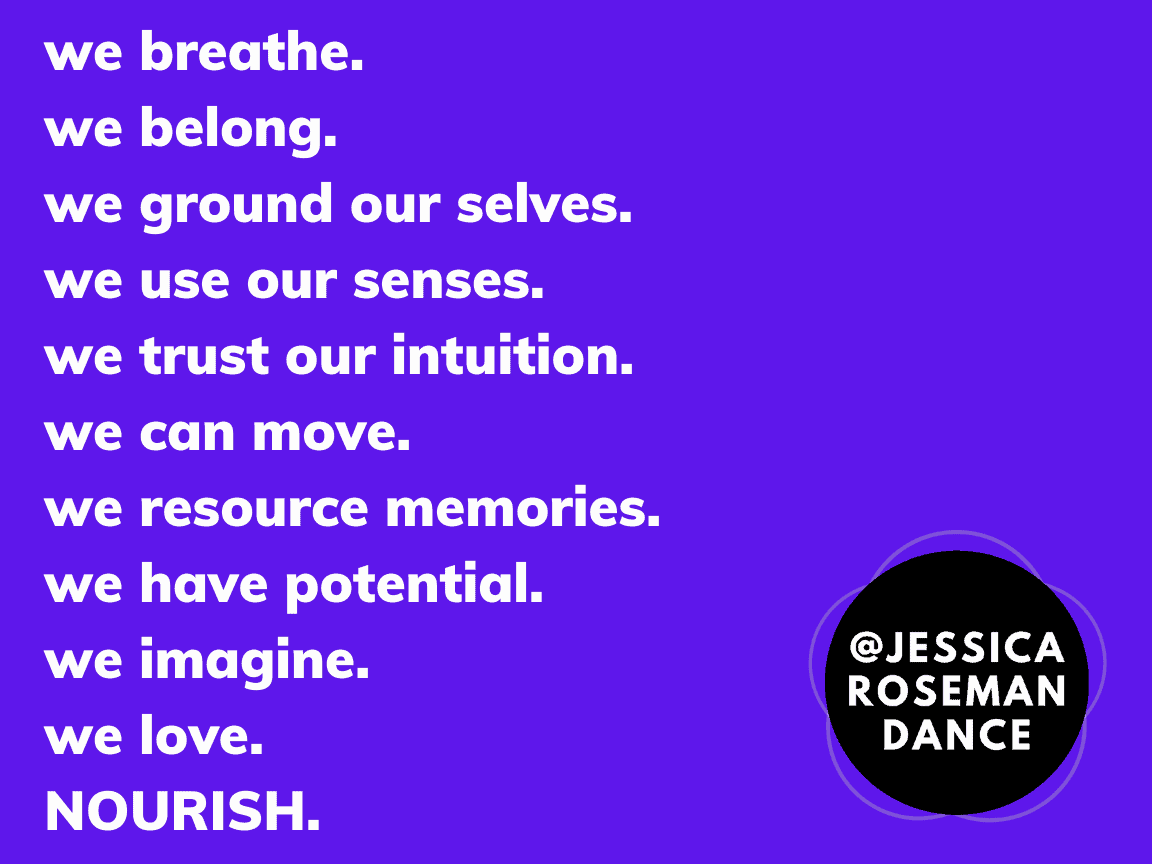
My education and background as a dancer, personal trainer, massage therapy instructor, and practitioner of the Feldenkrais Method of Somatic Education inform my current artistic project. Two of my most important teachers, the late Dr. Moshe Feldenkrais and revered choreographer Deborah Hay, who coincidentally are Jews, both developed movement practices that stem from inquiry. Asking “How…? Why…? What if…?” with attention and rigor is a particularly Jewish characteristic. Thoughtful questions can lead us to awareness. For the High Holidays, we interrogate the past year. In asking ourselves, “What can I do better?” we consider our potential and make amends for the future.
At Jewish holidays, we ritualistically retell the same stories to strengthen what we value most. These holidays also create cherished memories. Inside our bodies, repetition also strengthens identity. The nervous system develops layered pathways as it accumulates movement patterns and sensations. We become what we do. In reliving empowering experiences, Nourish engages pre-existing neural pathways. Dancing the feelings anew, we affirm our existence with love and acceptance.
Like a family recipe for chicken soup, Nourish lets you choose from your cupboard what you need to feel better. Our wise bodies all contain lived experiences; all chicken soup stockpots contain water and chicken. To dance meaningful memories—or to simmer selected ingredients—is to creatively catalyze them into nourishment.
This post has been contributed by a third party. The opinions, facts and any media content are presented solely by the author, and JewishBoston assumes no responsibility for them. Want to add your voice to the conversation? Publish your own post here. MORE


